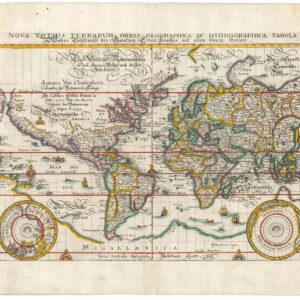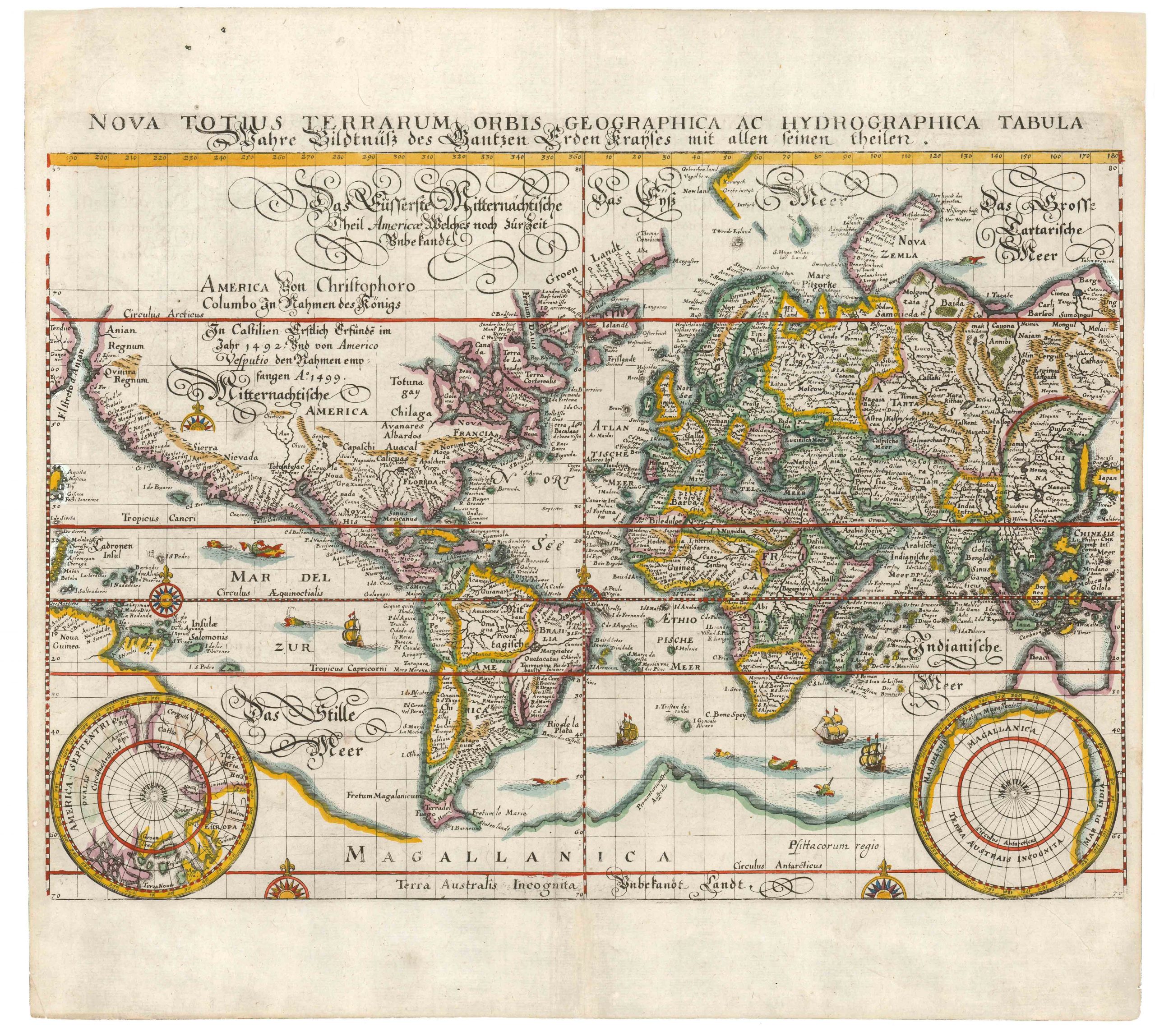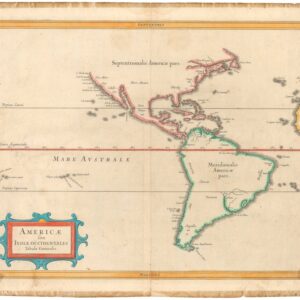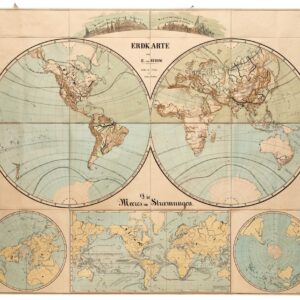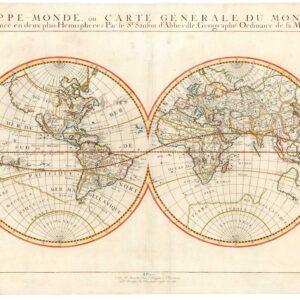Striking 1956 thematic map of the global petroleum industry — rare first edition published before the Suez Crisis.
[Data Visualization] Le Pétrole Dans Le Monde.
Out of stock
Description
A compelling visual presentation of the global oil and and gas industry in 1956. Issued by the French League of Petrol Producing Associations, this large-format map is a well-designed and attractive overview of key regions for crude oil exploitation, refinement, and transport.
The mapmaker uses a variety of visualization techniques to bring the data to life. The most basic approach is the use of shading. Regions shaded red represent oil fields already being exploited, and swathes of green, which cover much of the world, delineate lands likely to contain petroleum. A more complex method has been employed to illustrate important regions of production worldwide; here the cartographer uses orange circles of varying sizes and vignettes of oil rig towers of various heights to represent the proportional amount of oil output.
The overall picture painted by this effective combination of cartographic elements is clear: the principal oil-producing countries at this time were the United States, Venezuela, the Middle East, and the U.S.S.R. The latter is shown to have vast potential territories where crude oil was thought to be found beneath the surface, but that production was not meeting this potential (and indeed it would not until the fall of the Soviet Union).
Rounding out the array of data visualization techniques found on the map is the use of flow-style grey lines to illustrate sea routes by which oil was transported from producer to market. The line widths are weighted to represent the overall quantity shipped via each route, an approach first popularized by seminal cartographic statistician Charles Joseph Minard. In this sense, the map employs a graphic style that continues the important French tradition in the field of information graphics.
Beneath the main map, occupying a strip along the bottom of the overall piece, are two bar charts and three inset maps. The maps focus on the oil-producing regions of Venezuela, North America, and the Middle East, and constitute zoomed-in versions of the larger map. However, some new data has been added in the form of black circles and stars that plot refineries, along with red lines that trace the routes of pipelines. For their part, the graphs show the change in crude oil production between 1900 and 1956, as well as global trends in the use of primary sources of energy (coal, oil, natural gas, and hydraulic power) during the first half of the 20th century.
Census
This is the 1956 first edition of this map; a second 1958 edition includes an additional inset showing the change in petroleum distribution as a result of the Suez Crisis, which took place in October-November, 1956. It was printed by Imp. Lafayette and published by the Union des Chambres Syndicales de l’Industrie du Petrole in Paris. OCLC (#12625662) lists six institutional holdings worldwide, with just two in the United States (University of Illinois, University of Pittsburgh).
Cartographer(s):
Condition Description
Very good. Folds as issued.
References
